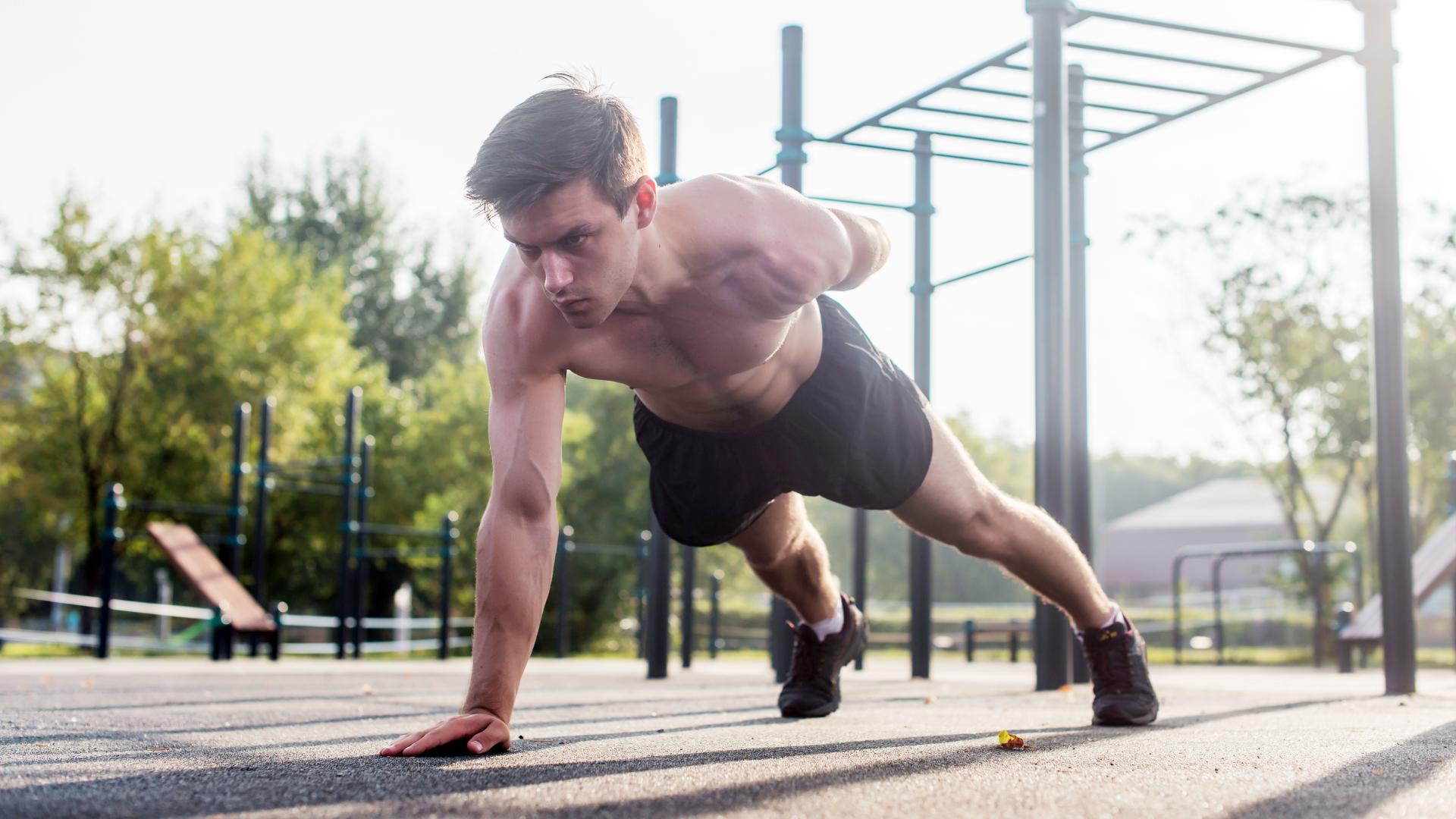
If you’ve got standard push-ups and the many variations locked down, why not try one-arm push-ups? The advanced upper body exercise relies only on your body weight, helping to build a strong and functional foundation for weightlifting, running and other forms of exercises.
One-arm push-ups might just become your bread and butter if you enjoy bodyweight training and calisthenics-style workouts. But while the move can develop a powerful upper body, it requires an existing degree of strength and power to do properly.
I tried (and failed) to add this exercise to my routine, but here’s why I love it and its benefits. Roll out one of the best yoga mats, and read on.
Are one-arm push-ups effective?
Hell, yes. If you're ready to up the ante, one-arm push-ups will do it. The move doubles the tension on one side of your body as you rely on one arm and various stabilizer muscles to perform a full push-up while keeping your hips and chest parallel to the floor. I tried (and failed) to clock up the reps for a recent Tom's Guide fitness challenge, and had to perform them from my knees to reach the floor with my chest for any number of reps.
Like regular push-ups, one-arm push-ups primarily target the pectoralis major muscles in your chest with assistance from your anterior deltoids (fronts of the shoulders), triceps and core muscles.
However, using one hand isolates one side of your body at a time while creating full-body tension, emphasizing the load on your left or right side depending on which hand you use, and working the obliques and hip flexors.
It’s incredibly effective for building upper body and core strength, stability, balance and coordination. If your goal is to develop power and strength in your arms, shoulders, core and chest — this is the move to try.
How to do one-arm push-ups
First, learn how to do push-ups and several push-up progressions that will develop the foundational strength required to achieve a full range of motion without faceplanting the floor or worse — causing an injury.
Good examples include diamond push-ups, which emphasize the triceps, and staggered-stance push-ups, which improve core activation and asymmetric motion. Aim to complete several sets of 10-12 reps unbroken, resting between sets, before you attempt one-arm push-ups.
How:
- Start in a push-up position with your hands shoulder-width apart, hips aligned with your shoulders and shoulders stacked over your wrists.
- Brace your shoulders, stomach, glutes and quads to create tension through your body.
- Place your feet, toes tucked, slightly wider than shoulder-width apart to create a stable base. Keep your hips square and neck neutral with your chin tucked under.
- Engage your lats, then lift your left arm and place your hand behind your back.
- Bend your right elbow, then lower your chest to the floor, keeping your arm close to your side.
- Pause at the bottom, then squeeze your chest and shoulder and drive through your right hand to push back up to the starting position.
Choose a number of reps you can manage with good form, complete the reps on one side, then switch sides. Aim for 2-4 sets.
One-arm push-ups: Benefits
Aside from building upper body strength, just like strict push-ups, one-arm push-ups build power and isolate one side of the body at a time, which could help level out any muscular imbalances between the left or right side of your body.
The exercise heavily recruits smaller, stabilizer muscles, enabling you to support your body weight and control movement through the full range of motion, building stability and balance and recruiting the whole upper body.
If you have a health condition or existing injury, consult a medical professional before starting a new exercise routine. If you experience sharp or prolonged pain, stop immediately and listen to your body at all times.
Remember that your results will depend on how consistently you train, and to build upper body strength over time, you’ll need to train the relevant muscle groups several times per week, gradually adapting your exercise volume as you get stronger.







